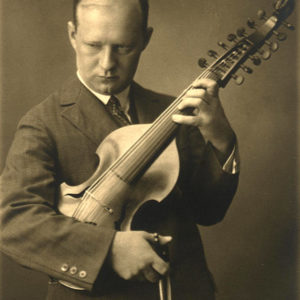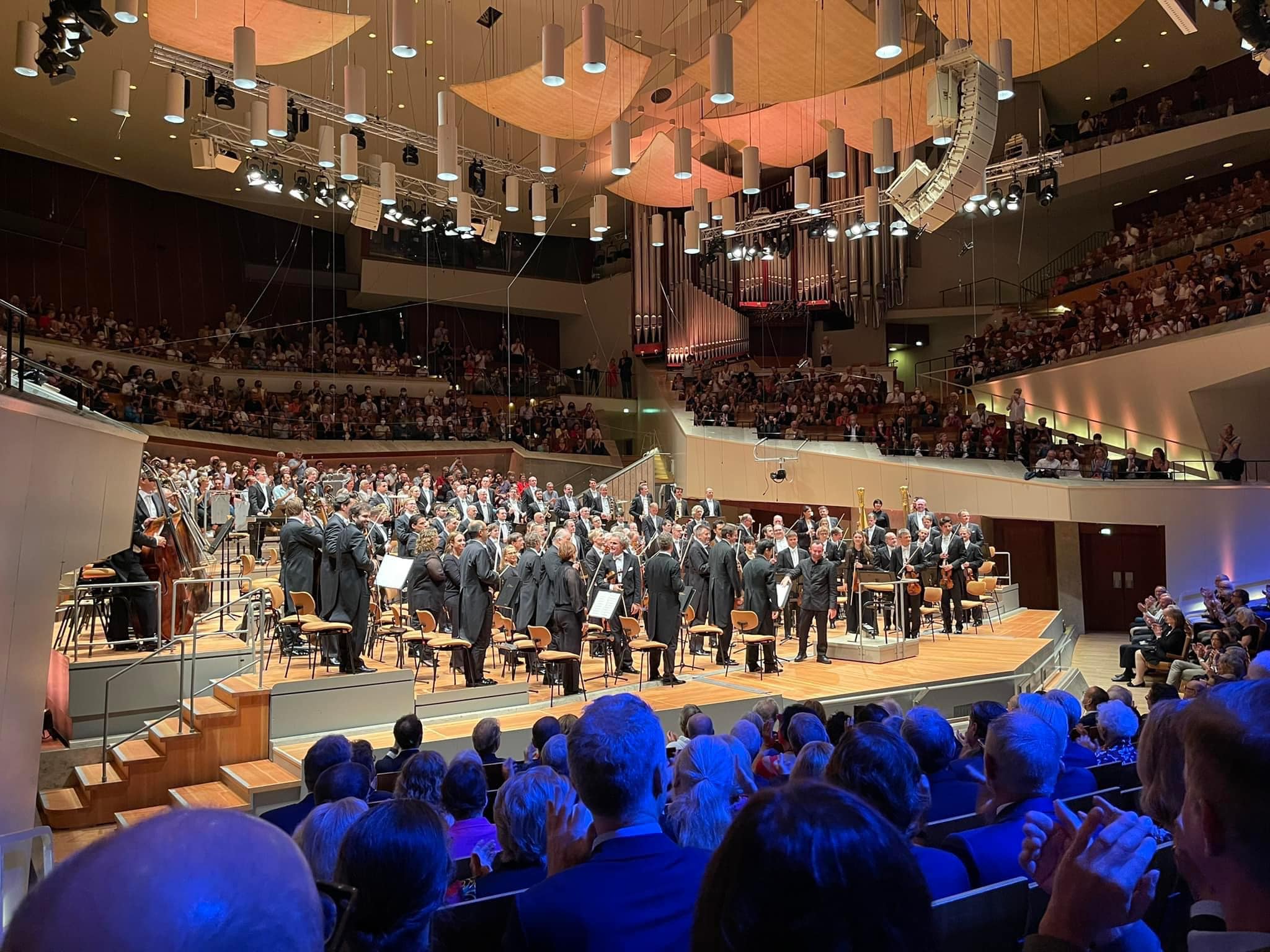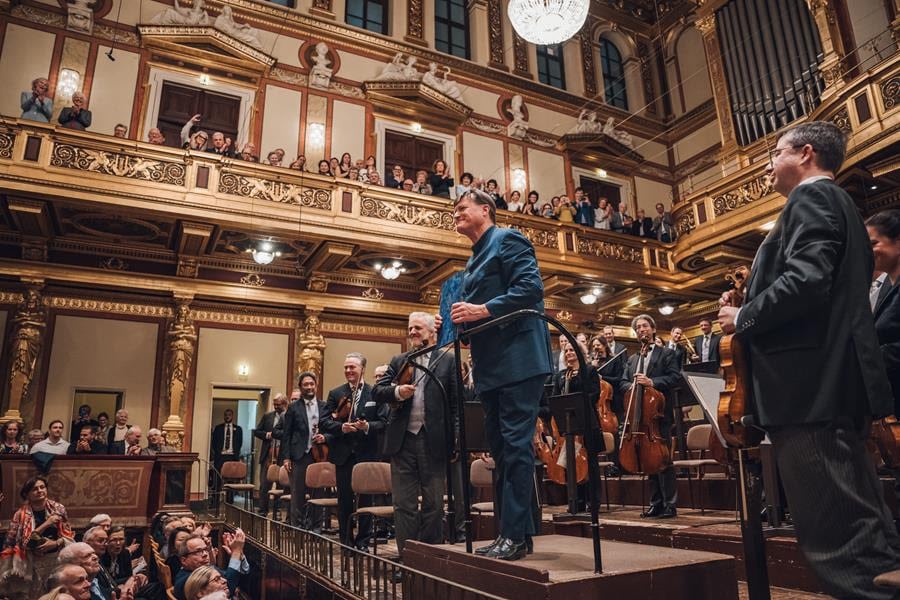Find me the way into Hindemith…
Album Of The WeekFrom the Lebrecht Album of the Week:
Hindemith is a house without a door. The immensity of his output — 11 operas, 5 ballets, a dozen concertos, countless works for orchestra, lots of chamber music — is not just daunting but superficially impenetrable. The consistency is high and the differentiation difficult.
A German who fought in the First War, and was exiled by Hitler, Hindemith concerned himself with performance high and low, writing for major stages and domestic living rooms. When asked, “which Hindemith should I try first?” I’m lost for an answer….
Read on here.
And here.
In The Critic here.
In Czech here.







What’s the extraordinary instrument Hindemith’s holding in the photo? 14 strings?
Viola d’amore
Many thanks, Gerry. 6 or 7 strings to be played with sympathetic strings beneath sometimes tuned to a different key. Exquisite sound. Reminds me of the Indian sarangi. Strange that it’s fallen out of favour as it’s so beautiful.
Hindemith’s favored instrument was a standard viola. A good example of him playing that instrument is a 1934 recording of his own String Trio No. 2, composed the previous year for performances with the violinist Szymon Goldberg and cellist Emanuel Feuerman.
Two years later Hindemith played the viola in the “Trauermusik” he wrote for the BBC, mourning the death of King George V.
Metamorphosis on themes by Carl Maria von Weber is easily penetrable. A lot of his music quite beautiful and powerful. Unfortunately, conductors and orchestras too quickly dismissed his music along with many others of his generation. Wonder why classical music is dying? That’s why. They neglected the new music of the 20th and never developed an audience. Of course, Hindemith was a rather prickly personality and did himself no favors. But boy could we use someone like Dimitri Mitropoulos who advocated for this music.
My recollection is that Paul Hindemith made much use of quartal harmonies, a practice that notably found its way into the music of jazz piano innovators McCoy Tyner and Chick Corea. When I studied with Mel Powell at CalArts, it seemed he rarely spoke for more than a few minutes without mentioning Hindemith, who he studied with at Yale, even succeeding his teacher as chair of composition there before becoming a founder of CalArts.
http://azuremilesrecords.com/momentousphrasemoment.html
“The Four Temperaments”, matched to Balanchine’s choreography. Made me a believer.
It is quite surprising to see how quickly Hindemith’s reputation has evaporated after WW II. Still in music histories in the fities and sixties he is placed next to Bartok and Ravel as a top composer, but later-on he shrinks to a mere couple of paragraphs, respectfully listing his achievements but without much warmth. And this seems to be the problem with his music: it is thorough, respectable, well-made and well-scored, but the bulk of it is so intellectually-constructed. His early works which are rather expressionistic are much better, there is much more music in it. And there are bits in Mathis der Maler that break through the mask. His use of fourths all over the place with hard-edged counterpoint gives his music that bitter taste of a meal that’s good for you but you will try to avoid next time. He wanted to be the quintessential German modern 20C composer, but his music was eclipsed by postwar Klangkunst – which for Hindemith was not music, and which seemed to suddenly paint him with the brush of conservatism.
Yet he was a most gifted and brilliant man. Somehow that does not always seem enough.
I think you described much of Hindemith’s music very well.
May the fourths be with you.
…and devil take the Hindemoste..
In 1975, I took a course at Yale with Luther Noss, an old friend of Hindemith in his day, who told us a few anectdotes about the composer.
One of them was that Hindemith had an infatuation with gardening. One day a woman thinking he was a real gardener, asked him to come and spruce up the one around her house. Paul was so happy about this that he excitedly ran to tell his wife Gertrude that “he had found a job!–Yea!”
Luther would also ask him when do you find time to compose? He would reply–“There is always 2-4 in the morning”.
As for the actual compositional process itself, Hindemith would say that it was like “seeing a city lit up at night by lightning during a stormy evening–the composer would then have to recreate everything he saw within that quick flash and put it to music.
Let’s not forget all of the Sonatas for “any instrument” and Piano.
There is also a short crime operetta “Hin und Zurück” where the plot and action continues up to a certain point, then pauses with everything going in reverse–even the music itself!
The high consistency of Hindemith’s music might make the answer to the question of where to begin easy: “Anywhere — it’s all good.” Alternatively, just look at the music catalogs, where the Weber Metamorphosis is the most-reproduced work, and assume that that’s a fine place to start.
It is difficult to not hear these Metamorphosis – except some short passages – as a completely joyless, matter-of-fact German neoclassicism that wants to be something like Wagner’s Meistersinger:
https://www.youtube.com/watch?v=2A8tUpPRyR4
Hindemith’s output is I agree vast, almost too vast, and as with Martinů one does despair of ever getting to know it all. But it is hardly impenetrable. Hindemith wrote a solid number of extremely approachable works which are nonetheless characteristic and thus do provide genuine gateways to the thornier stuff. First among them I’d list two works: Symphonic Metamorphosis of Themes by Carl Maria von Weber, and the Trauermusik for viola and strings. Even a pops concert audience could enjoy those pieces. Then the Mathis der Maler Symphony, the Konzertmusik for String Orchestra and Brass, Op. 50, the Violin Concerto, Der Schwanendreher for Viola and Orchestra, the Horn Concerto, and the 5 Pieces for String Orchestra op 44. To be sure he wrote more challenging and even off-putting pieces, but a listener would I think be favorably disposed towards (and be rewarded by) giving them a fair hearing if they could first accept the notion that Hindemith is a composer who wrote things they like.
For the gateway to his huge catalog of chamber music, I’d use the Viola and Piano Sonata, op. 11 no. 4.
With Hindemith it’s hit-or-mith.
Or as some Germans say: Hidemith? Hin damit!
To fill out the above, I offer this list. Agree or disagree, but be specific.
Hindemith Hits:
Mathis der Mahler
Symphonic Metamorphosis
Der Schwanendreher (viola and orchestra)
String Quartet No. 3
Kammermusik No. 3 (cello and 10 solo instruments)
Viola and Piano Sonata, Op. 11 No. 4
Trauermusik (solo viola and string ensemble)
The Four Temperaments
Solo Viola Sonata, Op. 25 No. 1
Hindemith Misses and Near-Misses:
Ludus Tonalis (solo piano)
Solo Viola Sonata, Op. 11 No. 5
Kammermusik No. 5 (viola and chamber orch.)
Viola and Piano Sonata, Op. 25 No. 4
Viola and Piano Sonata (1939)
Trio for Heckelhorn, Viola, and Piano
Trombone Sonata
Gebrauhsmusik
Hindemith? Not really very difficult. Nobilissima Visione, Mathis der Maler Symphony, Viola Sonata Op. 11 No. 4, Solo Viola Sonata Op. 25 (one of the great masterpieces for a solo stringed instrument), any of the string quartets, especially 3 and 4 in the new numbering, Der Schwanendreher, Trauermusik…
“Which Hindemith should I try first?”
Symphonic Metamorphosis, IMO.
Hindemith wrote some great and wonderful music- ranging from the grandiose and deeply serious (Mathis der Maler, Die Harmonie der Welt, Symphonie in Es, Concerto for organ and orchestra…), to the fun of Minimax for string quartet ( with Ouvertüre zu “Wasserdichter und Vogelbauer” ,Die beiden lustigen Mistfinken , Alte Karbonaden…) or the flamboyant high jinks of the Kammermusiken.
There some superb songs (Die junge Magd, Marien Leben), brillant concertos for cello, violin and piano, and a host of chamber music that I find extremely rewarding.
https://www.hindemith.info/en/home/
But yes, this kind of music isn’t popular and won’t fill concert halls. The same applies to plenty of works by Bartok, Stravinsky, Martinu, Dallapiccola, Frank Martin, Arthur Honegger, André Jolivet, Carl Ruggles, Matthijs Vermeulen, Rudolf Escher, Willem Pijper, Bruno Maderna, Henry Cowell, Roger Sessions….etc, etc.
“Expressionism” apparently is dead.
Paul Hindemith’s brother Rudolf was also a composer of interest!
https://en.wikipedia.org/wiki/Rudolf_Hindemith
Today’s contemporary composers and their allies have developed sharp elbows, so that doesn’t leave much room in the unfamiliar column.
…the secret password to get in is “Hump Hi Tin Lead” whispered three times at dawn.
Please explain for people who do not speak english.
…and for people who do.
Wow, I really like the idea that someone made orchestral suites from “Sancta Susanna” and “Nusch-Nuschi”, then coupled them to my favorite orchestral work by Hindemith: the “Mathis der Maler” Symphony. I will definitely be picking this up. I’ve noticed that Marin Alsop gets a lot snarky remarks at this site, but I’ve always enjoyed seeing her conduct. She gets good results. In fact, I’ve liked some of her Bernstein recordings better than Bernstein’s own. I hope she does well with the radio orchestra in Vienna.
I’ve always loved Hindemith’s Requiem for those we love, based Wallt Whitman’s poem ‘When lilacs last in the dooryard bloom’d’
If the word underlying all of Mozart’s music is “elegance” (no matter what else the music also contains, elegance is always there), then the word underlying Hindemith’s music, for me at least, is “unease.”
His music always sounds to me like there’s something wrong just below the surface, like an H.P. Lovecraft story.
That is exactly true. It is 20C music, which is fundamentally uneasy and creepy, with evil lurking around the corner, whatever HIndemith tries to suppress it and create a well-ordered surface.
Hindemith’s various Kammermusiken are delightful. They are kind of 20th century concerti grossi. The two sonatas for solo violin opus 31 are wonderful, particularly the one ending with a bunch of variations on Mozart’s “Komm liever Mai” song. Anything he wrote for violin or viola solo is wonderful, and far from cerebral. Hindemith wrote tons of great music, but the enormous mass of works makes people insecure. Same with Max Reger.
Here is his Kammermusik nr 1:
https://www.youtube.com/watch?v=LXsl4uiJx9k
It is nice cactus music.
For as much as these comments may be worth, I for one am grateful to Hindemith for the pleasure and excitement his music has often given to me. I’d endorse the positive value of works so far popping up in this discussion, and would add the Tuba Sonata, the Sonata for Piano/4 hands and that for 2 pianos. Perhaps greatest of all, Ludus Tonalis for solo piano. Clever, yes ( what is the harm in that?); but brilliant of expression as well. And massively pianistic.
As others have said, start with the Symphonic Metamorphoses.
Then conclude with his, er, transcription of the Flying Dutchman overture.
https://youtu.be/9QjodlxRxa8
However funny (or not) you find it, you certainly can’t question his commitment in seeing that particular joke through to its full conclusion.
The Mathis Der Mahler symphony is a great place to start if you want to hear more of his contemplative, spiritual side; the Nobilissima Visione Suite is also good in that vein. If you want some humor thrown in, Symphonic Metamorphoses. my favorite recordings: Boston/Steinberg for the Mathis Der Mahler, Martinon/Chicago for the Nobilissima, and Szell/Cleveland (the stereo recording) for the Symphonic Metamorphoses.